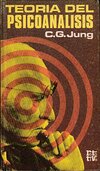

Fai clic su di un'immagine per andare a Google Ricerca Libri.
|
Sto caricando le informazioni... La teoria della psicoanalisidi Carl Gustav Jung
 Nessuno Sto caricando le informazioni...
Iscriviti per consentire a LibraryThing di scoprire se ti piacerà questo libro. Attualmente non vi sono conversazioni su questo libro.  nessuna recensione | aggiungi una recensione
Although the theories presented in this book, a 1915 edition of the lectures Jung presented at Fordham University, are now thoroughly outdated, this book is still a fascinating glimpse of Jung's mind at a crucial time in his life. Just three years previously, he had struck out on his own, publishing his Wandlungen und Symbole der Libido, known in English as Psychology of the Unconscious. That book represented his break from the Vienna school led by Freud, and also represented the end of the deeply emotional relationship between Jung and Freud. Jung's thought is now moving in his own path; he is no longer a Freudian, but he isn't yet a Jungian; the development of his own theory of psychology has a long way to go. So, in this book, we see him in transition, his thought a work in progress, his theory a project still under construction. The ideas which we remember him for are taking root; watching them do so is a fascinating experience for students of psychology and its history. Non sono state trovate descrizioni di biblioteche |
Discussioni correntiNessunoCopertine popolari
 Google Books — Sto caricando le informazioni... Google Books — Sto caricando le informazioni...GeneriSistema Decimale Melvil (DDC)150.195Philosophy and Psychology Psychology Psychology Theory And Instruction Systems, schools, viewpoints Psychoanalytic systemsClassificazione LCVotoMedia: (4) (4)
Sei tu?Diventa un autore di LibraryThing. |
||||||||||||||||||||||||||||||||||||||||||||||||||||||||||||||||||||||||||||||||||||||||||||||||||||||||||||||||||||||||